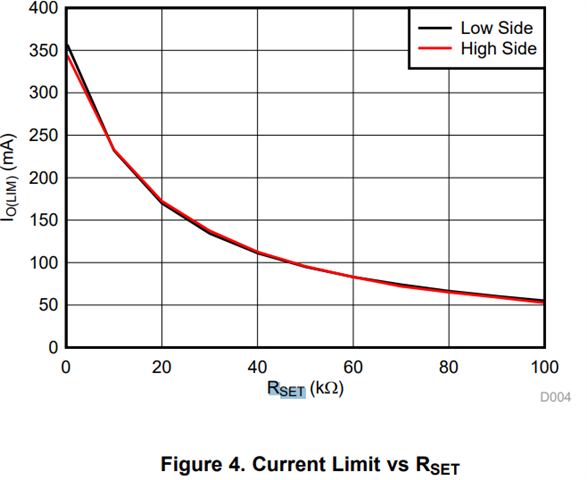Other Parts Discussed in Thread: TIOL112
Hi,
I am debugging a custom board with TIOL111 on it. TIOL111 can limit the current to the communication C/Q pin by inserting a resistor Rset between the 6th pin ILIM_ADJ pin and GND.
Looking at Figure 4 on page 8 and Table 1 on page 12 of the data sheet, the maximum value is 300 to 350 mA, and the upper limit can be further lowered by changing the Rset resistance value.
When I installed Rset of 10kΩ and checked, the current was 1.7 to 2.0A. From the calculation results in the datasheet, the upper limit should be 200-250mA.
The above confirmation is performed by connecting the C/Q pin and GND with 0.1Ω, and setting the C/Q pin to High by setting EN=High and TX=Low. The current value is calculated by checking the voltage across 0.1Ω using an oscilloscope. Current Fault Detection seems to be functioning, repeating the operation of stopping output at about 240us and restarting output at about 16ms.
Can you give me any comments?
Thanks,
Conor




